Internacjonalizm: przypis do landszaftu z fikusem i szpilplacem / Internationalism: A note on the landscape with the potted fig tree and the pitch
Instalacja w CSW Kronika w Bytomiu / Installation in the Centre for Contemporary Art Kronika
Kuratorka / curator: Agata Cukierska
24.03.2018 – 28.04.2018
CSW Kronika, Bytom / PL
Fot.: Marcin Wysocki | Kronika
24.03.2018 – 28.04.2018
CSW Kronika, Bytom / PL
Fot.: Marcin Wysocki | Kronika
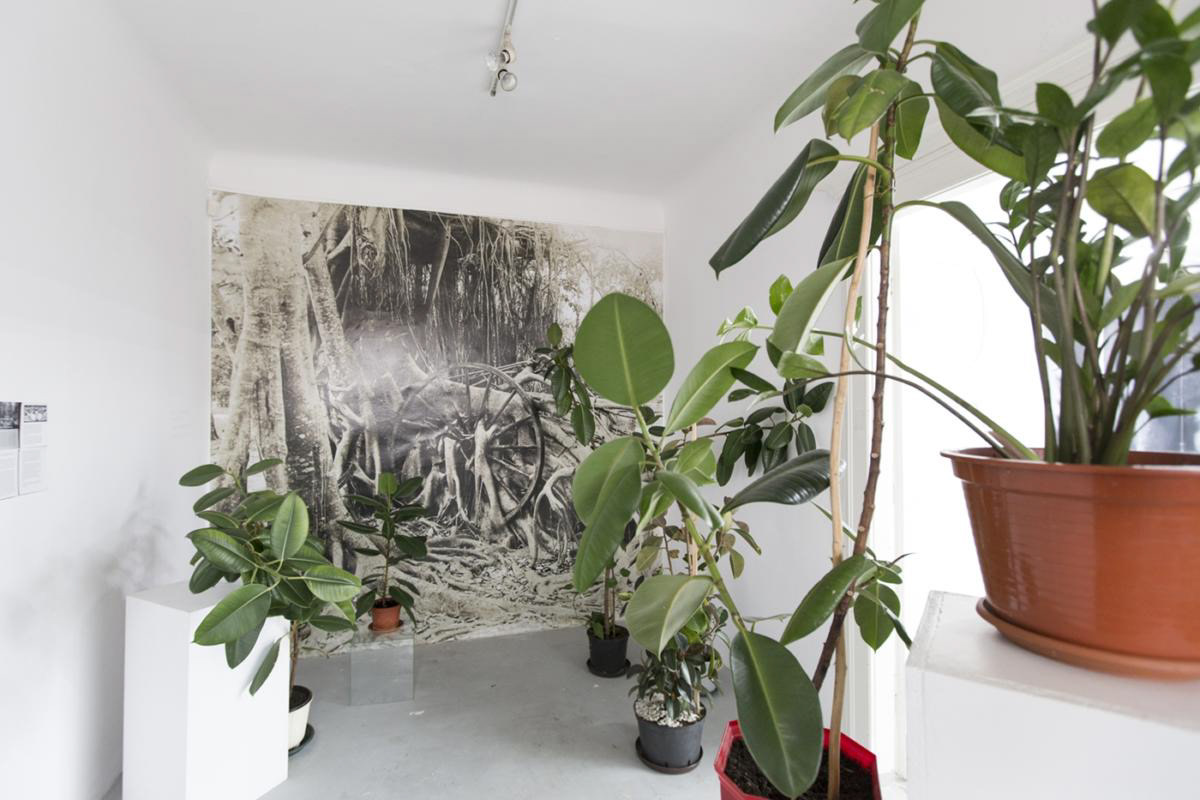
"Pokój z fikusami"
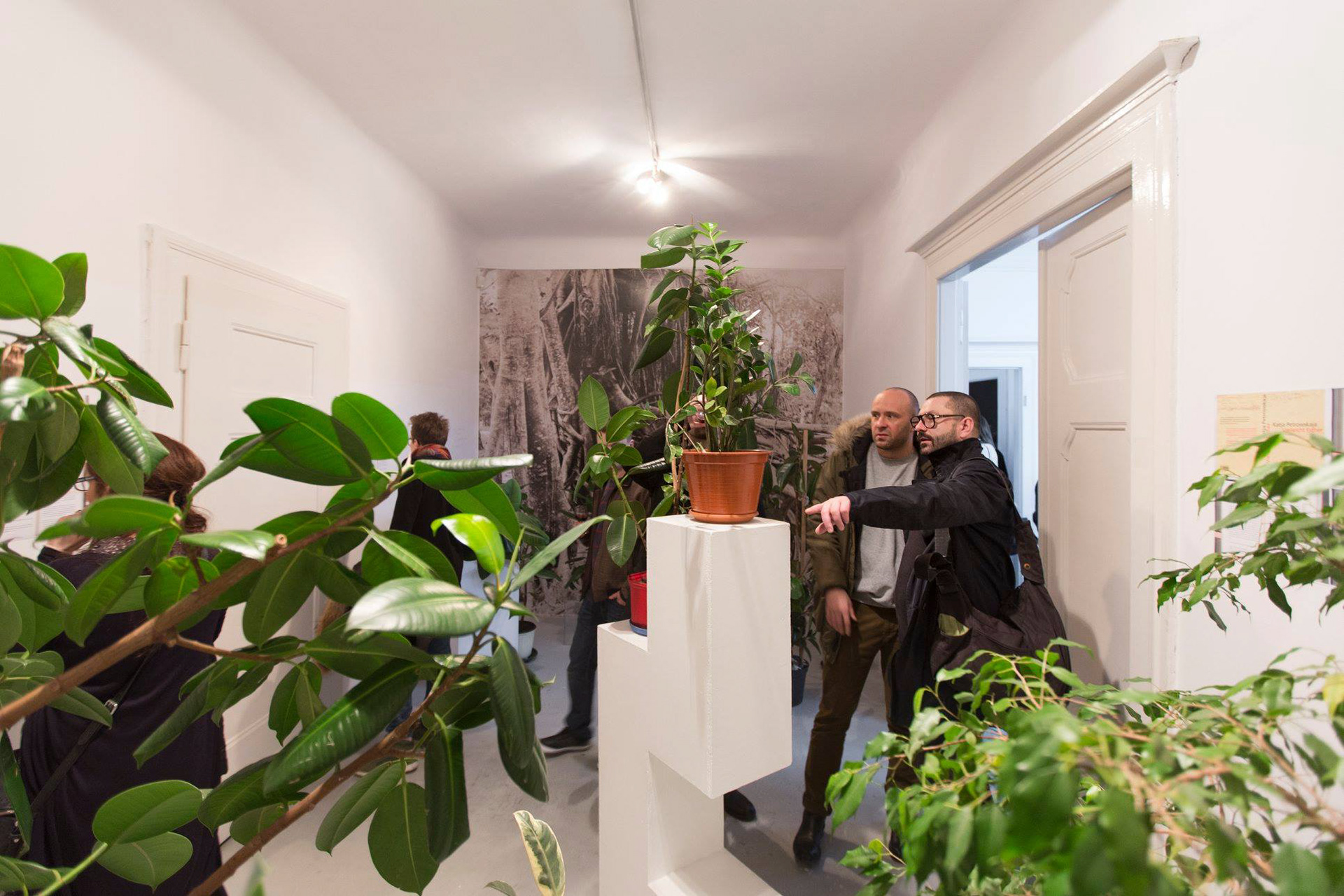
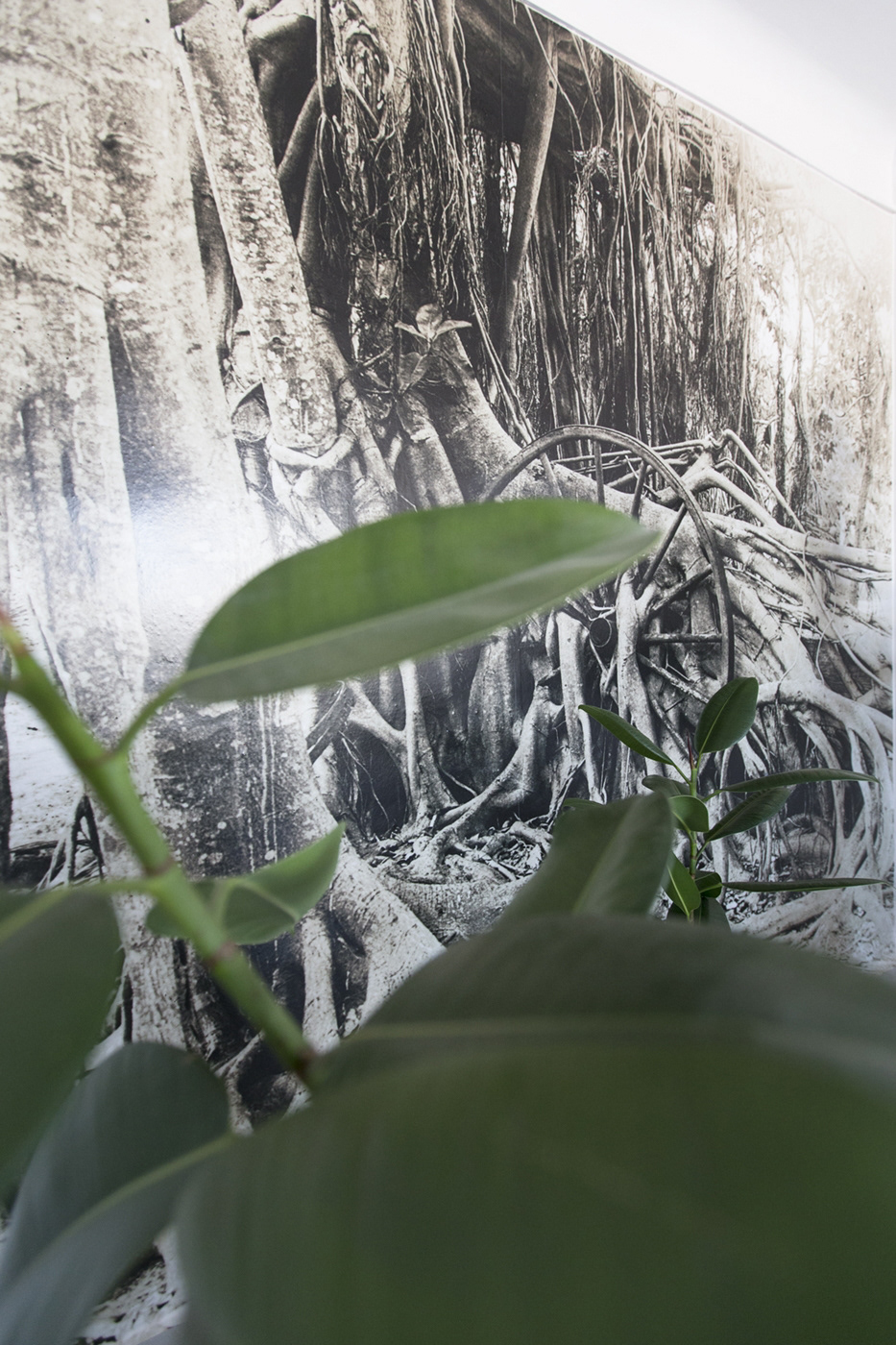
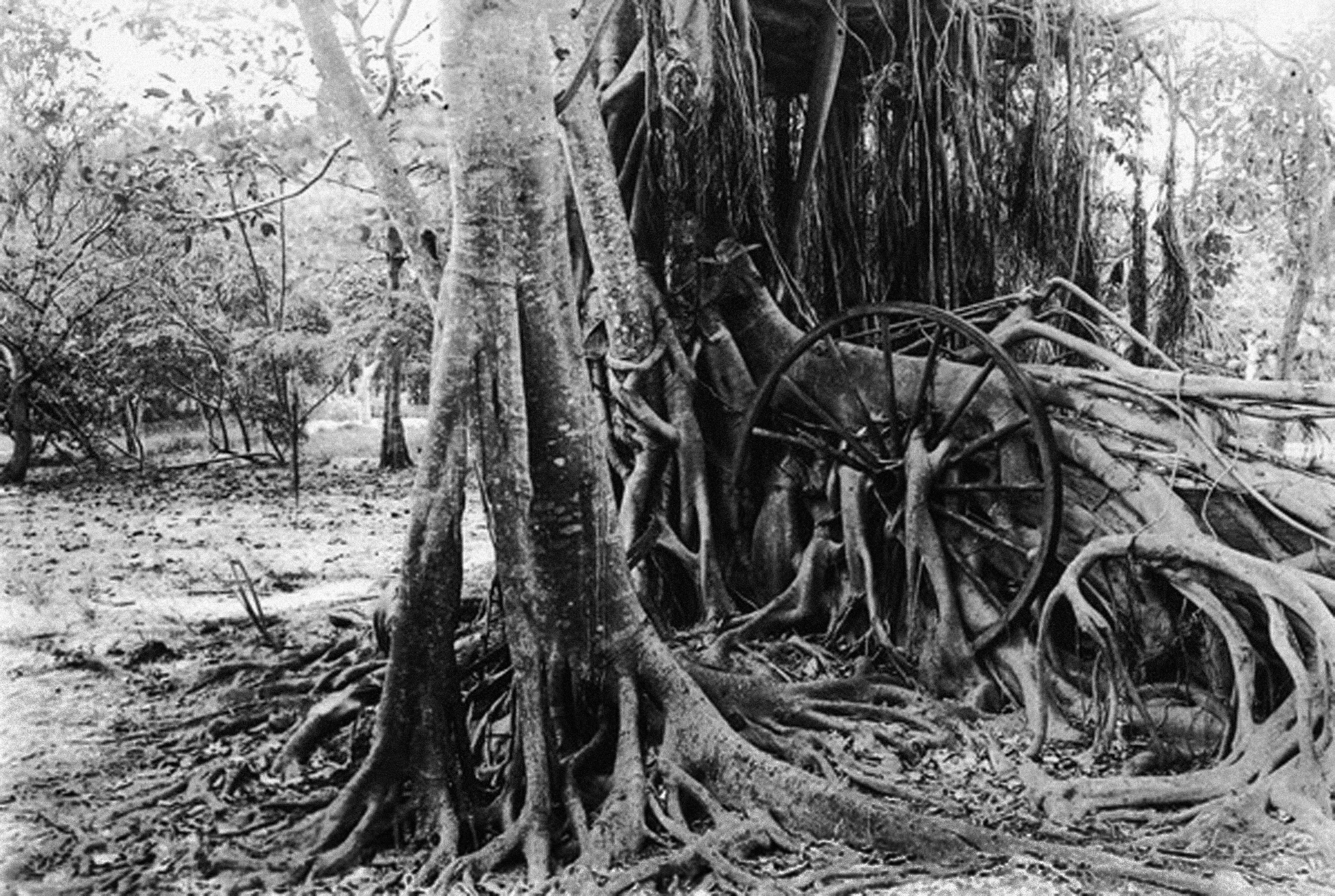
Ficus aurea encasing wagon wheel / time and place: 1918, Florida
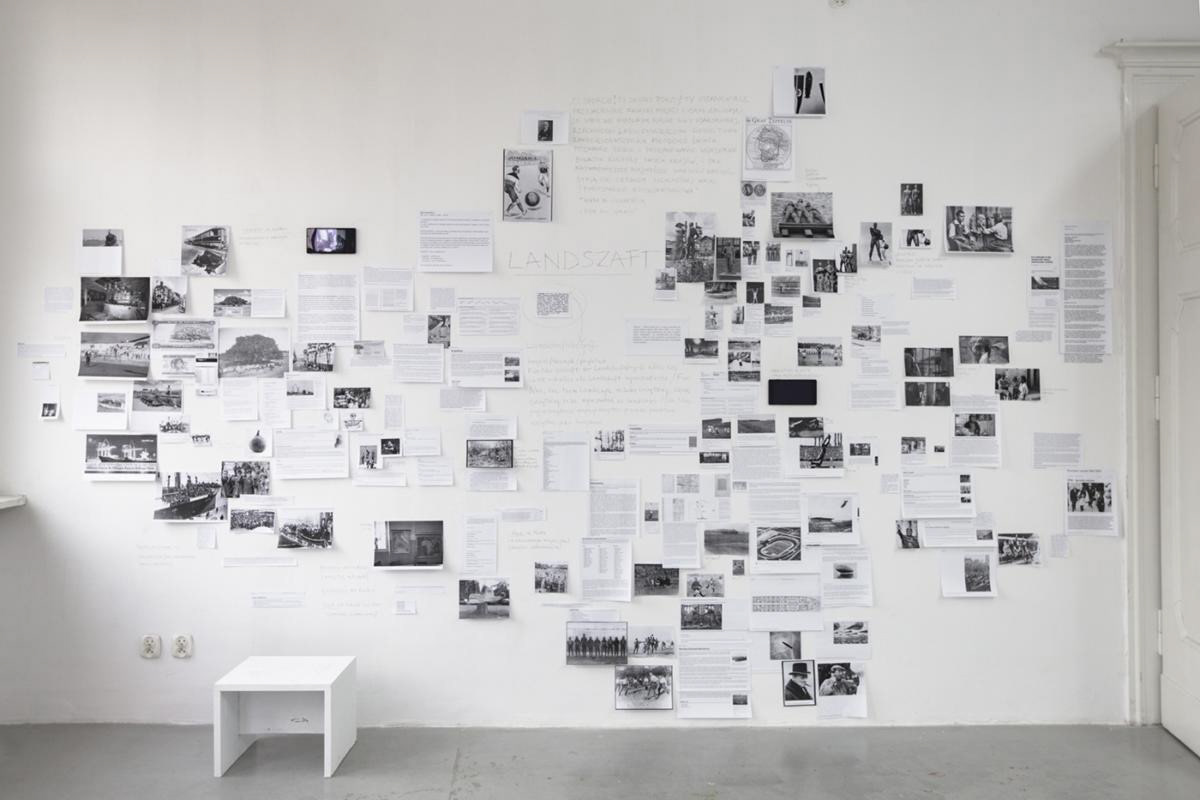
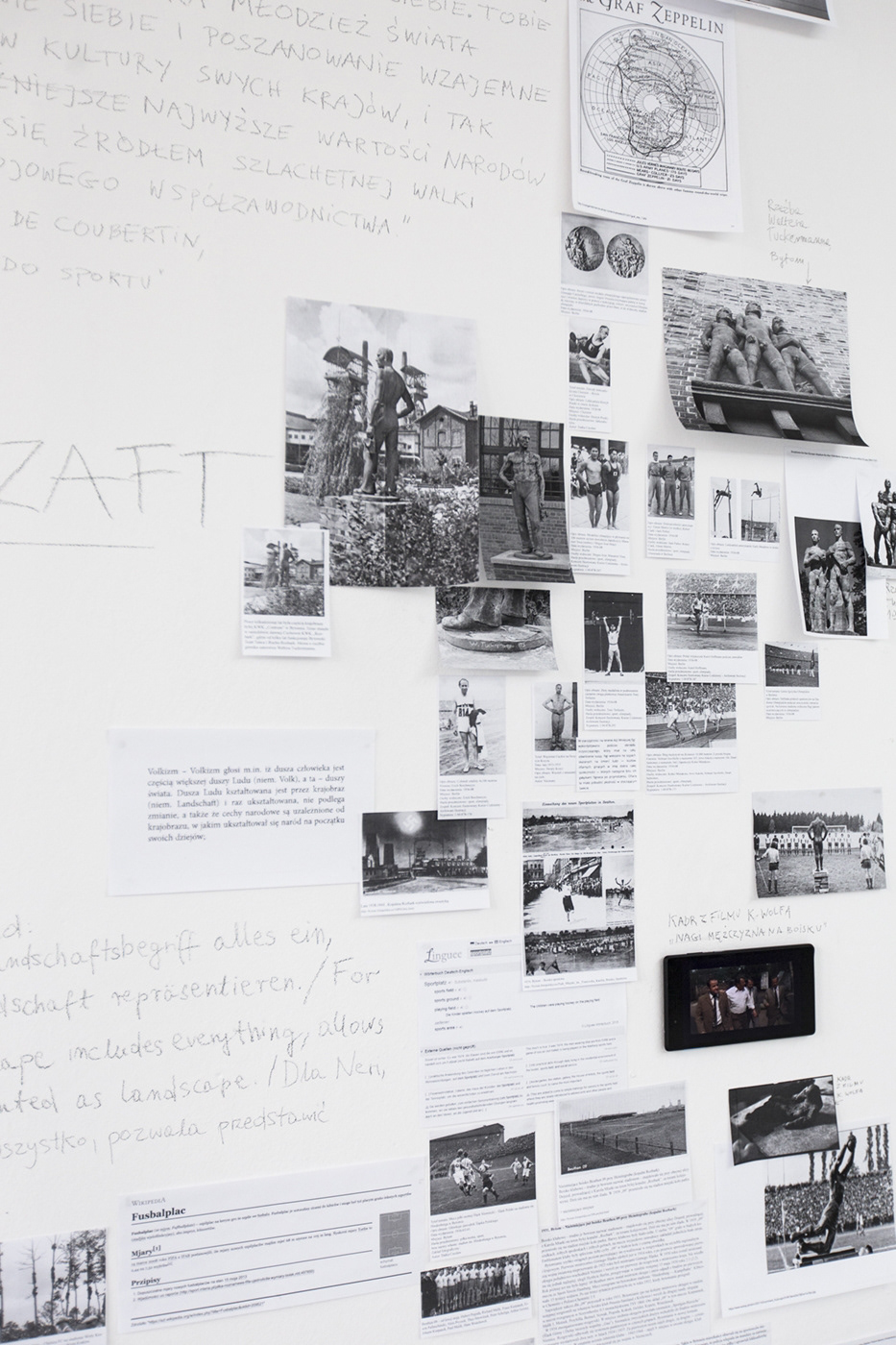
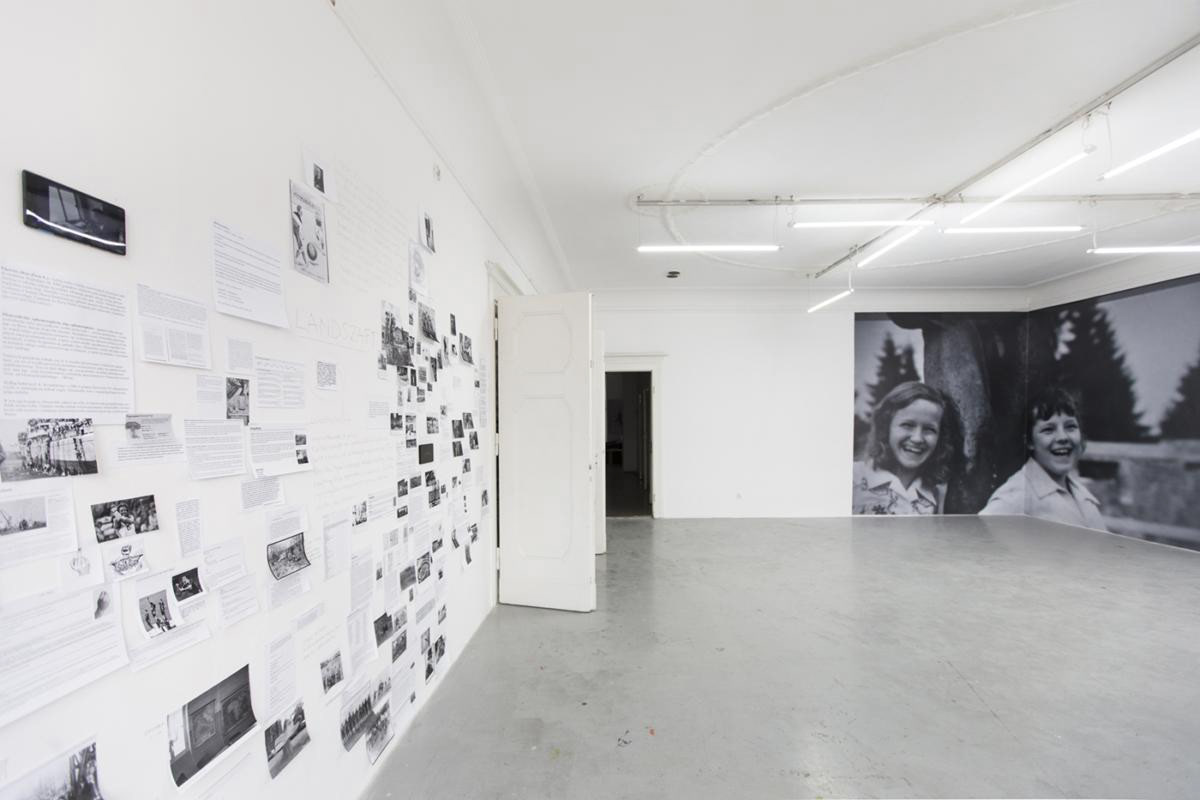
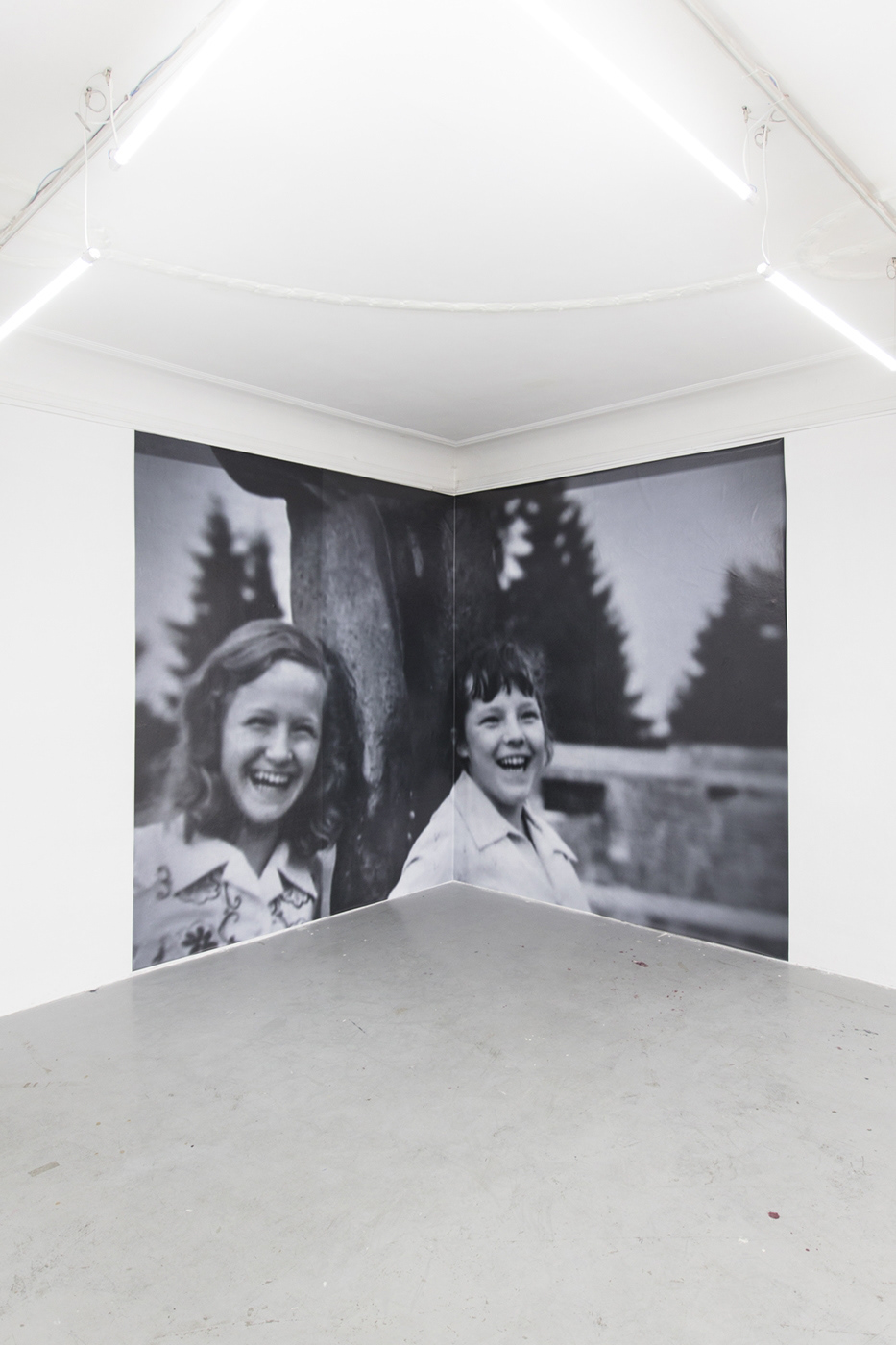
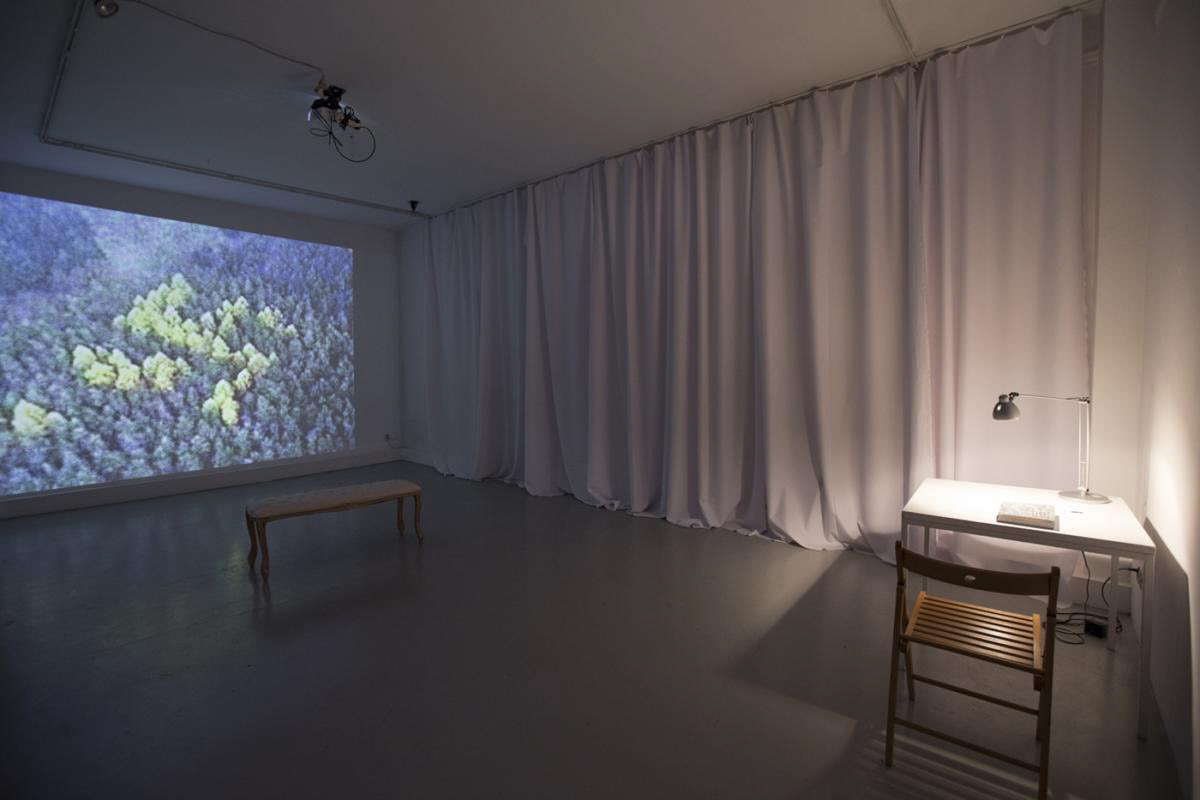

Plakta do wystawy autorstwa Marcina Wysockiego
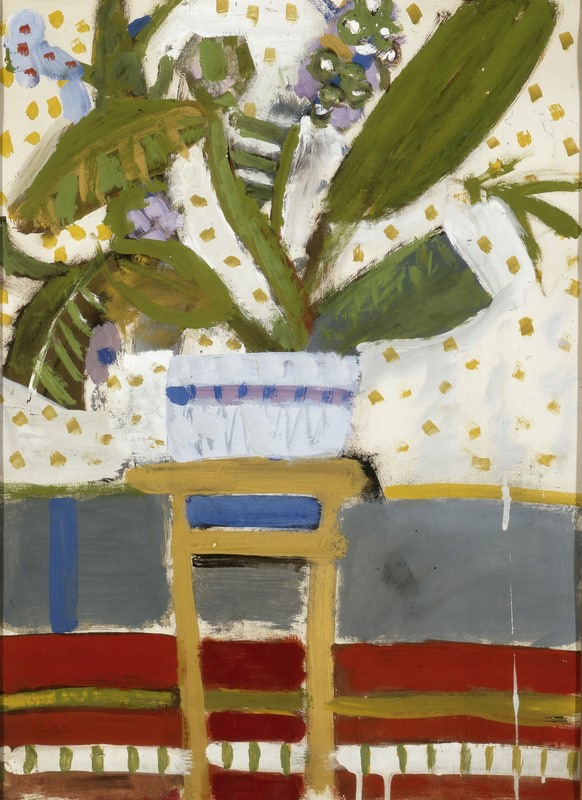
Ten, co malował fikusy: Syn żydowskiego kupca, kapista, uciekinier z lwowskiego getta, uznany malarz, który niemal nigdy nie pokazywał obrazów. Artur Nacht-Samborski – dla mniej zorientowanych ten, co malował fikusy | "Fikus na stołku" Artur Nacht-Samborski, 1965.
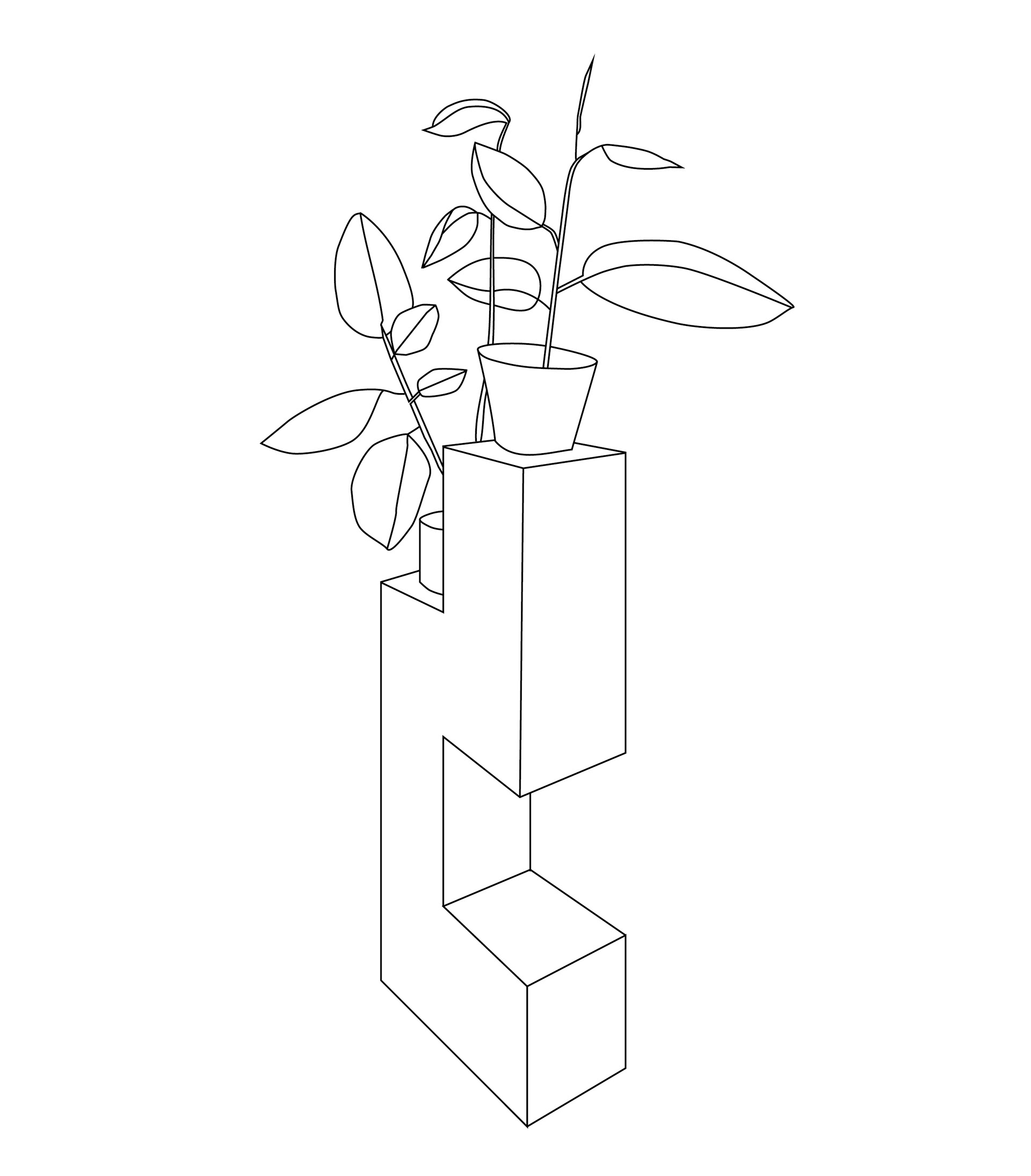
"Kubizujące" postumety dla fikusów nawiązują stylem do malarstwa Nachta-Samborskiego
PL / EN (for english scroll down)
internacjonalizm
1. «dążenie do równouprawnienia, przyjaźni i współpracy wszystkich narodów»
2. «wyraz zapożyczony z jakiegoś języka do wielu innych języków i mający w nich to samo znaczenie»
1. «dążenie do równouprawnienia, przyjaźni i współpracy wszystkich narodów»
2. «wyraz zapożyczony z jakiegoś języka do wielu innych języków i mający w nich to samo znaczenie»
Katja opowiada historię rodzinną z czasów II wojny światowej, którą usłyszała kiedyś z ust swojego ojca. Dlaczego pisze akurat o fikusie? Bo fikus uratował jej ojcu życie. Jest rok 1941 i kto może ucieka z Kijowa — trwa ewakuacja rodzin wraz z całym dobytkiem; każdy bierze ze sobą co się da. Ojciec Katji (wówczas kilkuletnie dziecko) również ucieka, ale w wozie transportowym już brakuje miejsca. Ktoś usuwa z niego fikusa — duży kwiat w donicy — i dzięki temu uzyskane zostaje miejsce dla chłopca. Człowiek zamiast kwiatu. Katja zapamiętuje tę historię szczególnie dobrze, właśnie ze względu na wyjątkową rolę fikusa. Pewnego dnia Katja wspomina razem z ojcem czasy wojny i przypomina mu historię jego ucieczki z Kijowa, o której sama zresztą się kiedyś od niego dowiedziała. Co się okazuje: ojciec nie pamięta o żadnym fikusie! Pamięta dokładnie wszystkie szczegóły ewakuacji — historia referowana przez Katję zgadza się we wszystkich detalach za wyjątkiem fikusa… Nie mogą się nadziwić skąd wziął się w opowiadaniu fikus. Każdy jest pewien swojej wersji. Po jakimś czasie ojciec zaczyna powątpiewać w swoją wersję, ale nie jest do końca pewien czy był tam fikus, czy nie. Chociaż fikus był lub mógł być jak najbardziej rzeczywistym przedmiotem, można pomyśleć, że w zasadzie nie chodzi o fikusa, ale o słowo fikus.
Fikus, fikcja, fantazja, forma, formuła, fremdsprache, freund, future, foe, Feind.
„Fikus” jako figura językowa uratowanego przez fikusa człowieka.
Fikus to fabuła o tym jak język ratuje życie.
Fikus, fikcja, fantazja, forma, formuła, fremdsprache, freund, future, foe, Feind.
„Fikus” jako figura językowa uratowanego przez fikusa człowieka.
Fikus to fabuła o tym jak język ratuje życie.
Małgorzata Szandała
Historia fikusa pochodzi z książki Katii Petrowskiej "Może Estera".
..............................................
Historia fikusa pochodzi z książki Katii Petrowskiej "Może Estera".
..............................................
Kłącze to dziczka, skomplikowany system podziemnych pędów lub nadziemnych korzeni, kłąb, bulwa, cebulka. Kłącze to ziemniak i perz, zgraja szczurów i zwierzęce nory, mrówki i trawa. Rizomatyczny jest język i pamięć, tkanka glejowa i nitki marionetki, aparalelna ewolucja osy i orchidei, kota i pawiana, wschodnie ogrodnictwo "klonów" i amerykański kapitalizm, underground i bitnicy.
Gilles Deleuze, Felix Guattari
Gilles Deleuze, Felix Guattari
Wszystko zaczyna się od języka: jego struktury, zawartych w niej znaków i kodów; znaczącego i znaczonego. Jego fizyczne reprezentacje: pojedyncze elementy, obrazy czy fotografie nie mają sensu, jeśli nie odnoszą się do tego, co znane.
Przez łączenie anonimowych obrazów czy obiektów z pojęciami, kulturowymi kodami, następuje odkrywanie znaczeń. Powstają kolaże skojarzeń, które nachodzą na siebie, łączą się — czasem w najmniej oczywistych momentach. Artystka obudowuje je kontekstami, znaleziskami, którymi mogą być zasłyszane anegdoty, archiwalne fotografie czy własne interpretacje. Z zestawień rodzą się nowe opowieści lub reinterpretacje danych zastanych. Ze zdobytych materiałów powstaje rodzaj kłącza — nieskończona siatka nawiązań i powiązań, dopełniających się historii, bez wyraźnego początku i końca.
Opowieści nie zawsze są wygodne i przyjemne, mogą dotykać sytuacji krytycznych, stanów zagrożenia, niechcianych wspomnień i niechlubnych momentów historii. Dodatkowym narzędziem jest pamięć i jej plastyczność. Wykorzystanie tych elementów umożliwia zastanowienie się nie tylko nad tym jak przeszłość wpływa na teraźniejszość, ale też jak teraźniejszość oddziałuje na przeszłość.
Agata Cukierska, 2018
Przez łączenie anonimowych obrazów czy obiektów z pojęciami, kulturowymi kodami, następuje odkrywanie znaczeń. Powstają kolaże skojarzeń, które nachodzą na siebie, łączą się — czasem w najmniej oczywistych momentach. Artystka obudowuje je kontekstami, znaleziskami, którymi mogą być zasłyszane anegdoty, archiwalne fotografie czy własne interpretacje. Z zestawień rodzą się nowe opowieści lub reinterpretacje danych zastanych. Ze zdobytych materiałów powstaje rodzaj kłącza — nieskończona siatka nawiązań i powiązań, dopełniających się historii, bez wyraźnego początku i końca.
Opowieści nie zawsze są wygodne i przyjemne, mogą dotykać sytuacji krytycznych, stanów zagrożenia, niechcianych wspomnień i niechlubnych momentów historii. Dodatkowym narzędziem jest pamięć i jej plastyczność. Wykorzystanie tych elementów umożliwia zastanowienie się nie tylko nad tym jak przeszłość wpływa na teraźniejszość, ale też jak teraźniejszość oddziałuje na przeszłość.
Agata Cukierska, 2018
[EN]
Internationalism
1. „to advocate equal rights, friendship and cooperation among all nations”
2. „a loanword that appears in several languages with the same meaning”
1. „to advocate equal rights, friendship and cooperation among all nations”
2. „a loanword that appears in several languages with the same meaning”
Katja tells the family story from 2nd WW, which she heard once from her father. Why does she write about the potted fig tree? Because the fig tree saved her father’s life. It is 1941 and everyone escapes Kiev, the families are being evacuated with their belongings, everyone takes what they can. The Katja’s father who is several years old at that time escapes as well, but in the transport truck there is no place for him. Somebody removes a fig tree from the car, a huge plant in a flowerpot, so a little space for the boy is made. A man replaces the pot plant. Katja remembers it very well because of the special role of the fig tree. One day Katja talks with her father about the war times and reminds him the story of his escape from Kiev, which he told her himself some time ago. It turns out the father doesn’t remember the fig tree at all! He remembers all the details of evacuation, all the details match the story Katja is telling him, apart from the potted fig tree… They are amazed and can’t understand where did this fig tree came from, and how it entered the story. Both are absolutely convinced their version is true. After some time the father starts to doubt his version, but still he is not sure whether the fig tree was or wasn’t there. Although it could be a real object, one can wonder whether it is about the potted fig plant, or the word „fig” itself. A fig tree, fig, figa, fiction, fantasy, form, formula, fremdsprache, freund, future, foe, Feind.
„A fig” as a figure of speech that represents the man saved by the fig tree.
A fig as a storyline about the language that can save life.
Małgorzata Szandała
The story about the fig tree comes from the book "Maybe Esther" by Katja Petrowskaja.
„A fig” as a figure of speech that represents the man saved by the fig tree.
A fig as a storyline about the language that can save life.
Małgorzata Szandała
The story about the fig tree comes from the book "Maybe Esther" by Katja Petrowskaja.
A rhizome is a rootstock, a complicated system of underground sprouts or aerial roots, withers, bulbs, tubers. A rhizome is potato and couchgrass, or the weed. Language and memory are rhizomatic, as well as glia and marionette threads, and aparallel evolution of the wasp and the orchid, the cat and the baboon, Eastern horticulture of „clones” and the American capitalism, the underground and the beatniks.
Gilles Deleuze, Felix Guattari
Gilles Deleuze, Felix Guattari
Everything begins with the language: its structure, sings and codes that the structure comprises. Material representations of the language, its single elements, pictures or photographs do not make sense if they do not relate to what is known.
When anonymous images or objects are linked with concepts and cultural codes, the emergence of meaning can take place. Collages of associations come into existence that overlap each other and connect with each other in the least expected moments. The artist lines them with contexts and finds — anecdotes, archive photographs or reinterpretations of the data that are already there. All these create a kind of a rhizome, an endless matrix of references and connections of the stories that complement each other and do not have clear beginnings and endings. The stories are not always comfortable and pleasant, they may touch critical situations, moments of threat, unwanted memories and disgraceful moments of history. The additional tool is memory and its plasticity. These elements allow to reflect both on the influence of the past on the present, and on the influence of the present on the past.
Agata Cukierska, 2018
When anonymous images or objects are linked with concepts and cultural codes, the emergence of meaning can take place. Collages of associations come into existence that overlap each other and connect with each other in the least expected moments. The artist lines them with contexts and finds — anecdotes, archive photographs or reinterpretations of the data that are already there. All these create a kind of a rhizome, an endless matrix of references and connections of the stories that complement each other and do not have clear beginnings and endings. The stories are not always comfortable and pleasant, they may touch critical situations, moments of threat, unwanted memories and disgraceful moments of history. The additional tool is memory and its plasticity. These elements allow to reflect both on the influence of the past on the present, and on the influence of the present on the past.
Agata Cukierska, 2018